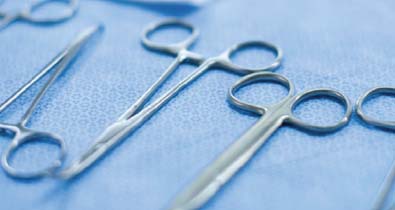In the old days, surgery was a nasty business. To work inside your body, doctors needed to make a hole in you large enough for their hands or at least the tools that they needed to use to perform the surgery. So to workon your heart, for instance, they needed tomake a hole that was really big and most ofthe recovery time after the operation was for recuperating from the hole that was made in your chest.
Smaller tools have been developed in the past 20 years and now “minimally invasive” surgery is used for a lot of different kinds of operations, like to fix a knee or to remove a gall bladder. The holes made to get to the problem are usually around a few millimeters and a few of them are made—one for the tool, another for a camera and maybe one for something to light up things inside. But small holes in the body heal much faster and easier than big ones!
Nanotechnology can be used to make very, very small things, including surgical tools. Scientists are building all sorts of devices that will hold, cut and mend very small parts inside your body—parts the size of a single cell, or even smaller.
The big challenge in building nanometer-scale devices is assembling the parts that are needed to move them and figuring out how to power them. One way to provide power is to use polymers that respond to heat or some external chemicals. The polymer changes its shape and causes the parts that the polymer is attached to—for instance, the arms of a gripper—to close.These tiny grippers might be used to grab cancer cells and then bring back samples for analysis. Other tools being developed are very tiny cutters made by using piezoelectric material. Piezoelectric materials take electrical energy and convert it into mechanical energy,so when a little electricity is added they vibrate. Put a sharp edge on a device that’s vibrating and you have something that can now be used for cutting.
Replacing the surgeon’s hand is another big challenge. The hands of a surgeon help guide surgical tools and also provide the pressure required to keep the cutting tool in place.For the time being, doctors still hold these tools to put them where they belong and manipulate them to make them work. How these nanometer-scale tools will accomplish that has not yet been figured out, but there are a lot of scientists working on it.

